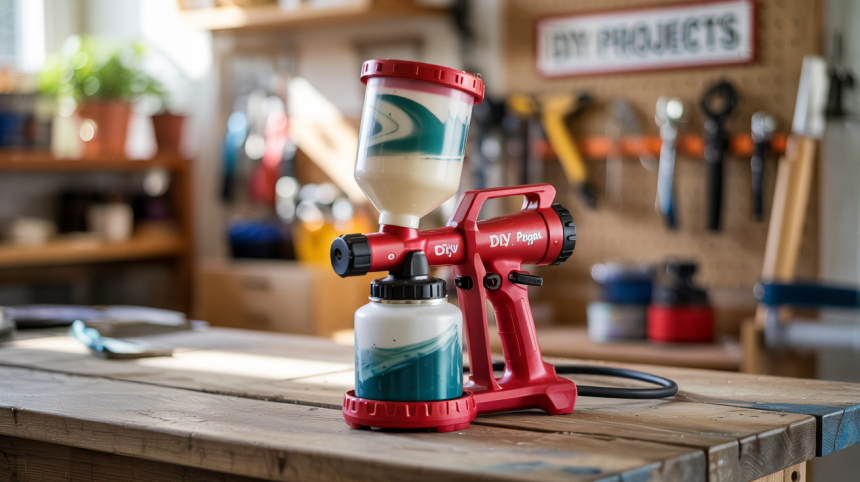Painting walls and furniture at home often takes too much time with brushes and rollers. Many homeowners give up halfway through projects because of the hours spent on tedious work.
But what if you could finish painting three times faster? Paint sprayers help you complete home projects quickly, with a smooth finish that looks like professional work.
With a good paint sprayer, you can refresh your kitchen cabinets, update old furniture, or change wall colors in a weekend instead of a week. You’ll save money on hiring professionals while getting results that look just as good.
Ready to find the right paint sprayer for your next home project? Let’s look at the top options that won’t break the bank.
Why Use a Paint Sprayer for DIY Projects?
Paint sprayers save you time on home projects. When you use brushes and rollers, a simple room can take all weekend. With a sprayer, you can cut that time in half or better.
The finish from a paint sprayer looks much smoother than what you get with other tools. No brush marks or roller lines means your walls, furniture, and cabinets look clean and well-done.
You can use paint sprayers on many surfaces in your home. They work well on:
- Walls and ceilings
- Furniture
- Kitchen cabinets
- Fences and decks
- Shutters and trim
The money factor matters too. Hiring someone to paint a room costs $300-500 on average. Buying a good paint sprayer for $100-200 pays for itself after just one project. Plus, you can use it again and again for future touch-ups and new projects.
Paint sprayers also reach spots that brushes can’t. Think about textured ceilings, fence slats, or cabinet corners. The spray gets into all those hard-to-reach places with no extra effort.
Breakdown of Different DIY Paint Sprayer Models
When tackling home painting projects, choosing the right type of paint sprayer can make all the difference—here’s a breakdown of the most common DIY models and their ideal uses.
1. Airless Paint Sprayers
Airless sprayers push paint through a small tip at high pressure. This makes them perfect for big areas like walls and ceilings.
What to know about airless sprayers:
- They work fast on large surfaces
- They handle thick paints well without thinning
- They use more paint than other types
- They cost more but save time on big jobs
Most home DIY fans choose airless sprayers for whole-room makeovers or outdoor projects like fences.
2. HVLP (High Volume Low Pressure) Sprayers
HVLP sprayers use a high volume of air at low pressure to create a fine mist of paint.
Why choose HVLP:
- They give very smooth, high-quality finishes
- They waste less paint (up to 50% less overspray)
- They work well for small, detailed projects
- They cost less than airless models
These sprayers shine when you work on furniture, cabinets, or crafts where details matter.
3. Compressed Air Sprayers
These are the oldest type of paint sprayers on the market. They need an air compressor to work.
Good points of compressed air sprayers:
- They cost less if you already own a compressor
- They offer good control for small projects
- They create fine finishes when set up right
- They work with many paint types when thinned
Pick this type if you already own a good air compressor and want to try spray painting without a big investment.
Top 5 Best DIY Paint Sprayers in 2025
Finding the right paint sprayer can make or break your home project. Here are the top five options that stand out this year for quality, value, and ease of use.
1. Wagner Spraytech FLEXiO 590
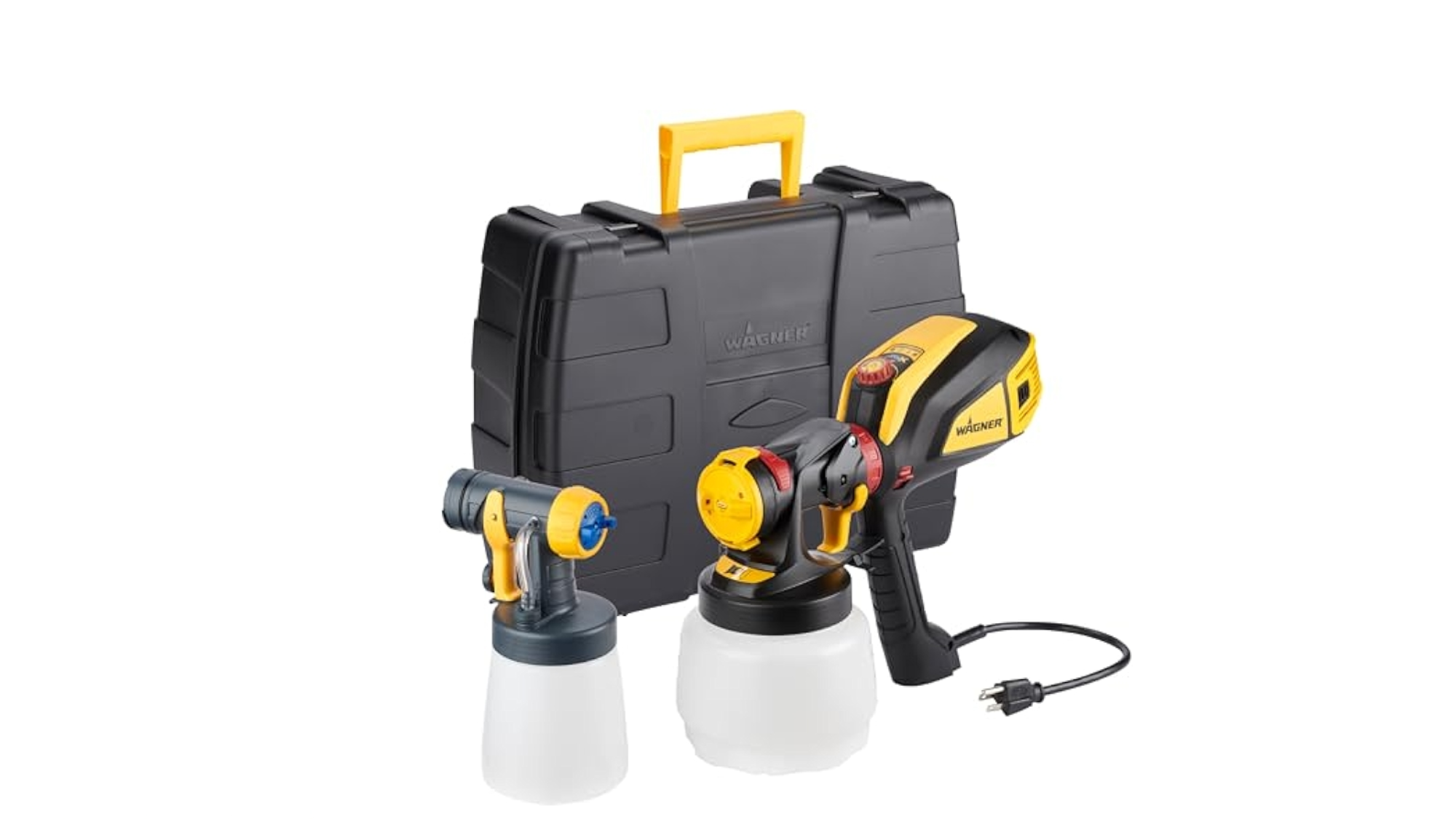
The Wagner FLEXiO 590 works well for both indoor and outdoor projects. It comes with two nozzles and adjustable settings to handle different paints and coatings without much prep work.
- Costs around $150-170, good value for features
- Includes two spray patterns for walls and fine finishing
- Sprays unthinned paints and stains
- Has nine speed settings for flow control
- Comes with 1.5-quart cup for larger projects
Keep in mind: The unit feels a bit heavy after long use periods. Take short breaks to rest your arm when painting ceilings or tall walls.
2. Graco TrueCoat 360 VSP
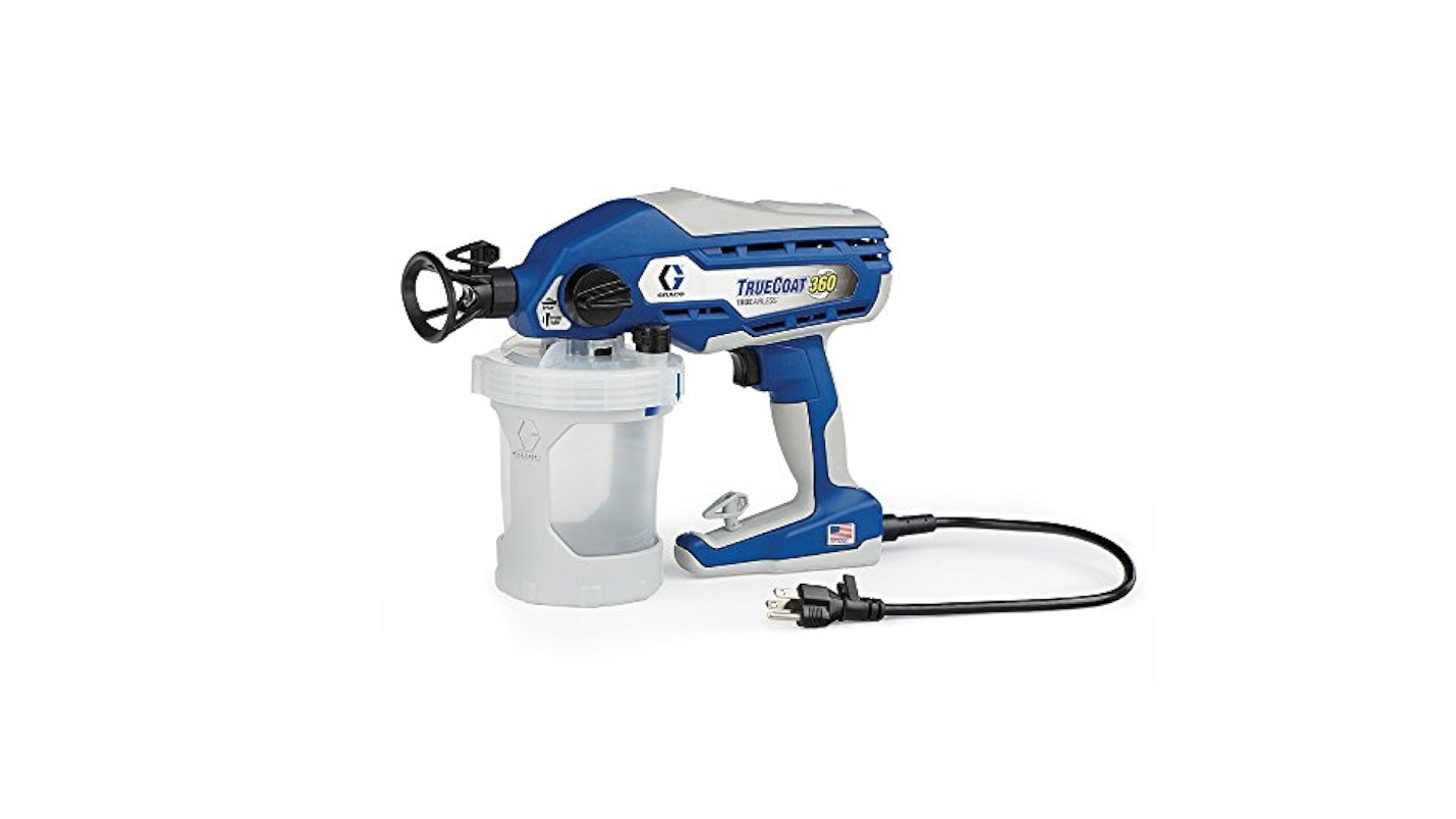
The Graco TrueCoat works at any angle – even upside down. This makes it perfect for hard-to-reach spots like under furniture or inside cabinets.
- Uses disposable paint bags to reduce cleanup time
- Works with unthinned latex paints straight from the can
- Has two speed settings for different project needs
- Built with metal parts that last longer than plastic ones
- Sprays in any direction thanks to its special pump design
Keep in mind: The disposable bags create more waste but save cleanup time. Budget for replacement bags if you plan many projects.
3. HomeRight Super Finish Max
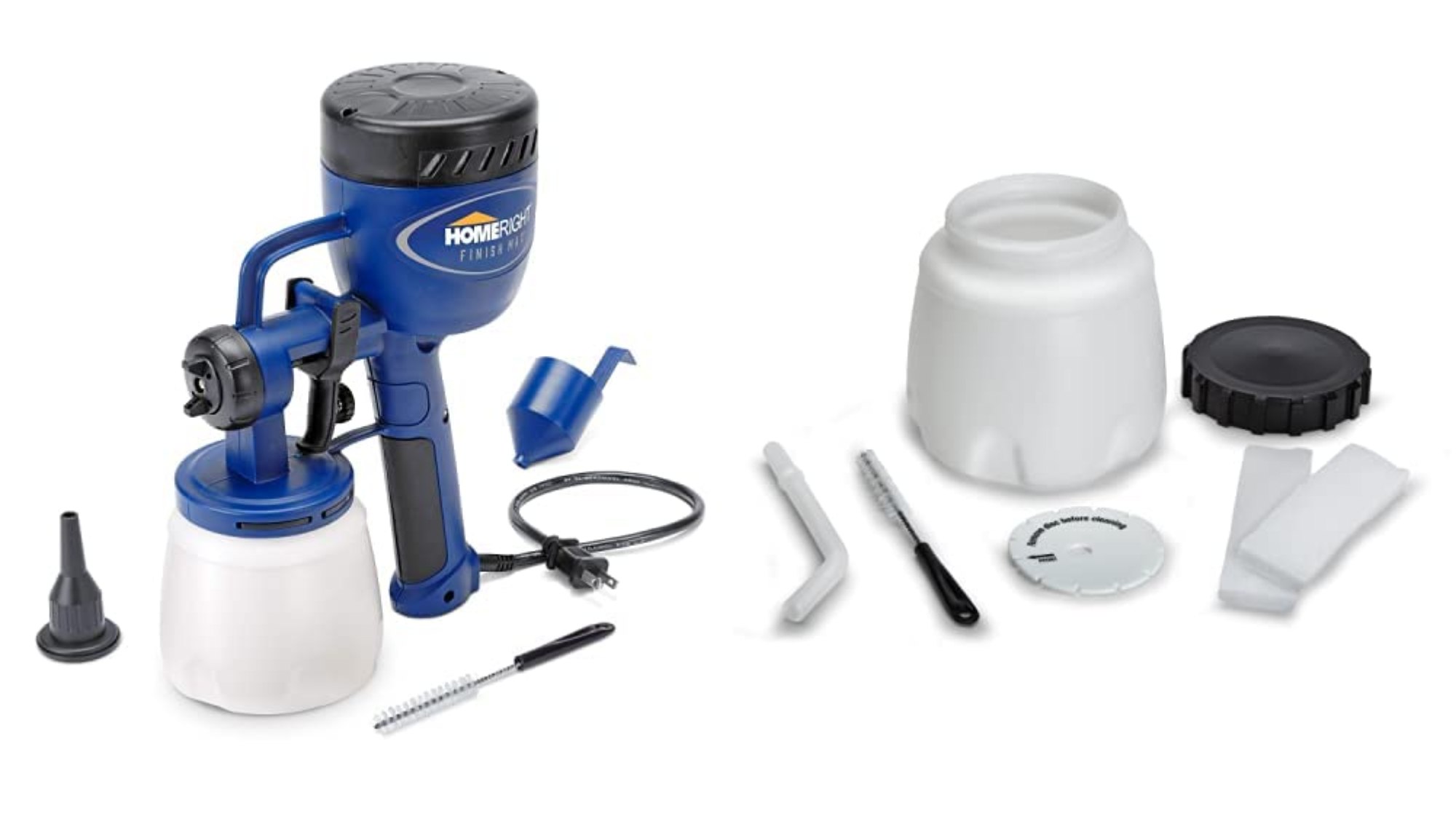
The HomeRight Super Finish Max offers good quality at a lower price point. It works well for small to medium projects around the house.
- Costs under $100, making it budget-friendly
- Comes with three spray tips for different patterns
- Adjustable flow control makes it good for beginners
- Has a 39-foot cord for good reach without extensions
- Sprays milk paint, chalk paint, latex, and stains
Keep in mind: You may need to thin some paints more than with higher-end models. Test your paint first and adjust as needed.
4. TACKLIFE Paint Sprayer SGP15AC
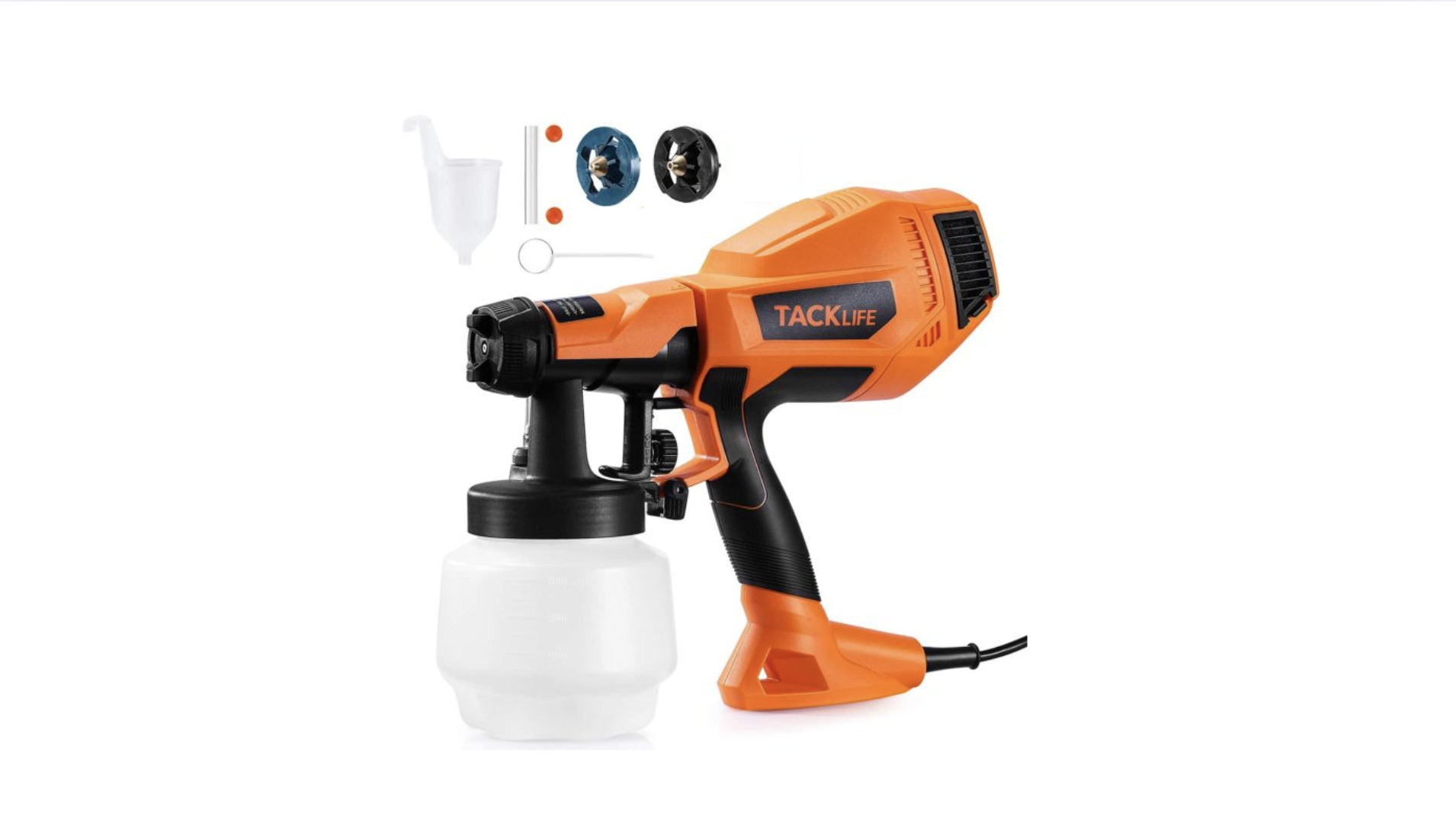
The TACKLIFE sprayer works best for small to medium jobs. It offers good control and three spray patterns at an entry-level price.
- Features three spray patterns (horizontal, vertical, circular)
- Has adjustable flow control knob for paint output
- Comes with five nozzle sizes for different materials
- Includes cleaning tools and a viscosity cup
- Weighs only 3.5 pounds for less arm fatigue
Keep in mind: The paint cup holds only 900ml, so you’ll refill more often on bigger jobs than with larger models.
5. NEU MASTER N3140 Electric Spray Gun
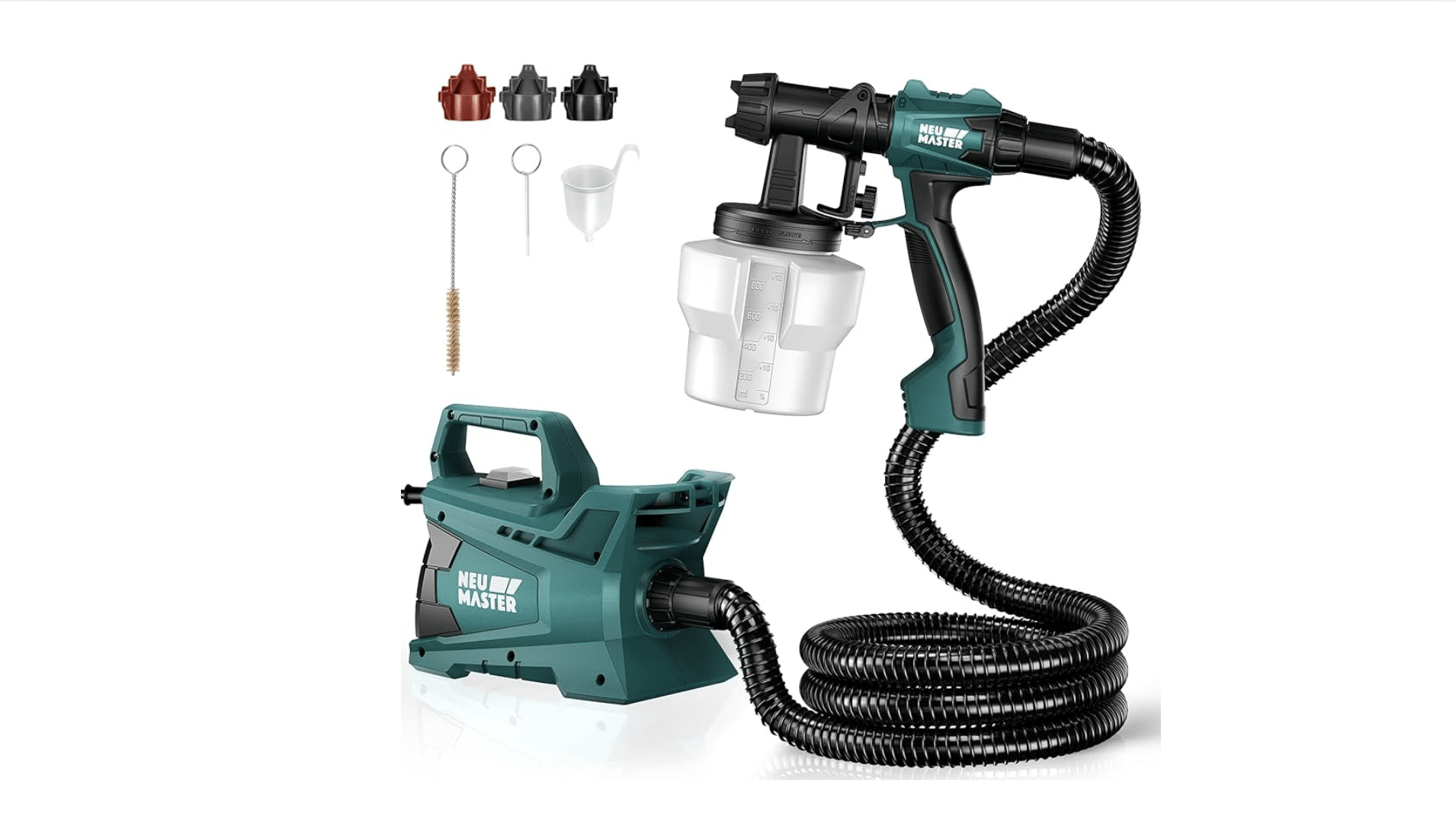
The NEU MASTER N3140 suits beginners with its simple design and lower price. It handles small projects like furniture or crafts well.
- Costs under $70, perfect for first-time spray painters
- Has two air flow patterns for different project needs
- Comes with a cleaning needle to prevent clogging
- Features a long power cord for good workspace mobility
- Includes a shoulder strap for better comfort
Keep in mind: Works best with well-thinned paints. Follow the included viscosity guide for best results.
Key Features to Look for in a DIY Paint Sprayer
1. Adjustable Spray Settings: Find sprayers with multiple patterns (horizontal, vertical, circular) and flow control. These options let you adapt to different surfaces without changing tools.
2. Ease of Use: Choose models with simple setup and quick cleanup. Fewer parts and included cleaning tools save time at the start and end of projects.
3. Portability: The sprayer should be light enough to use for long periods without arm fatigue. Look for units under 5 pounds or those with shoulder straps.
4. Durability: Metal parts last longer than plastic, especially for tips and nozzles. Check warranty terms and availability of replacement parts.
5. Versatility: Good sprayers handle various paints without much thinning or special attachments. Multiple nozzle sizes help switch between different materials.
6. Price Point: Mid-range ($100-200) offers the best value for most home users. Very cheap models often fail quickly while top-end ones exceed DIY needs.
How to Choose the Right Paint Sprayer for Your Project
- Project Size Assessment: Small projects (furniture, crafts) work well with HVLP sprayers; medium projects (room walls, cabinets) need mid-range airless sprayers; large projects (house exteriors, fences) require professional-grade airless models.
- Surface Type Consideration: Smooth surfaces need fine-finish HVLP sprayers; textured surfaces work better with airless sprayers; rough outdoor surfaces benefit from high-output, less precise sprayers.
- Paint Type Compatibility: Thin stains and sealers work with any sprayer type; latex paints need airless or high-end HVLP sprayers; thick paints require powerful airless systems with minimal thinning.
- Usage Frequency Factor: One-time projects might justify renting instead of buying; monthly usage warrants a quality mid-range sprayer; weekly usage demands a durable professional-grade model.
- Budget Parameters: Entry-level ($50-100) suits occasional use; mid-range ($100-200) offers the best value for regular DIY users; premium ($200-300) provides features that frequent users need.
Conclusion
Choosing the right paint sprayer makes all the difference in your home projects. The best sprayer for you depends on your specific needs – project size, paint type, and how often you’ll use it.
For most home users, a mid-range model with adjustable settings offers good value. Start with smaller projects to build your skills before tackling entire rooms or outdoor work.
Remember to practice on scrap surfaces first, and always follow safety steps like wearing a mask and covering nearby items. Clean your sprayer right after use to keep it working well for years.
With the right paint sprayer, you’ll finish projects faster and get smoother results than with brushes or rollers. Your walls, furniture, and other home items will look fresh and well-done.
Frequently Asked Questions
Why Don’t Painters Use Sprayers?
Many painters do use sprayers for large areas, but they avoid them for detailed work, small jobs, or when overspray, setup time, and cleanup aren’t worth the effort.
2. What Is the Number One Rule when Using Airless Spray Guns?
Always maintain proper safety by wearing protective equipment and never point the gun at yourself or others, as high-pressure spray can cause serious injuries.

